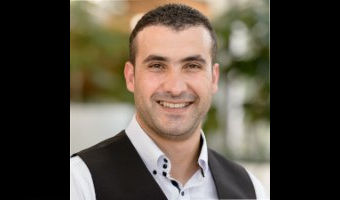The Institute of Nuclear and Particle Physics (INPP) presents Mohammad Hattawy, of Argonne National Laboratory, on “3d Partonic Structure of Nucleons and Nuclei” on Tuesday, April 3, at 4 p.m. in Edwards Accelerator Lab, Roger W. Finlay Conference Room.

Mohammad Hattawy
Abstract: A wealth of information on the structure of matter lies in the correlations between the momentum and spatial distributions of the fundamental constituents of matter: quarks and gluons. These correlations are accessible via the study of generalized parton distributions (GPDs). The deeply-virtual Compton scattering (DVCS) is the preferred probe of GPDs and has been used to study the proton in a number of experiments at HERA, CERN, and JLab, yielding the first 3D partonic images of the proton. New groundbreaking measurements of exclusive DVCS from the He-4 nucleus are a critical step towards providing similar 3D pictures of the quark structure of nuclei, and provide a new approach to understanding the modification of protons and neutrons within the dense environment of a nucleus. Studies of He-4 are particularly important, as their partonic structure is encoded within a single GPD. The new measurements provided the first beam-spin asymmetry data on exclusive DVCS from He-4 using a highly-polarized electron beam from the Continuous Electron Beam Facility (CEBAF) at JLab. Scattering from a pressurized He-4 target was measured in the CEBAF Large Acceptance Spectrometer (CLAS) with the addition of a new Radial Time Projection Chamber (RTPC). From the azimuthal dependence of the beam-spin asymmetry the real and imaginary parts of the He-4 Compton form factor, which is directly sample the nuclear GPD, were extracted in a model-independent way. This data proved the experimental feasibility of measuring such nuclear exclusive reactions and led the way to the approval of a next generation nuclear measurements. In this talk, I will present the recent results and the future measurements will be discussed.



















Comments